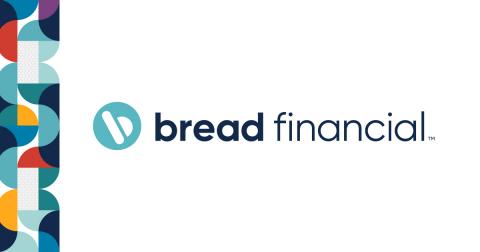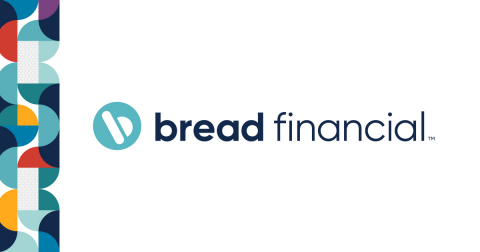Bread Financial Holdings, Inc. (NYSE:BFH) Financial Analysis

- Bread Financial Holdings, Inc. (BFH) has a ROIC of 0.1441% and a WACC of 12.76%, indicating challenges in generating profitable returns.
- Federated Hermes, Inc. (FHI) showcases strong financial performance with a ROIC of 20.35% and a WACC of 8.94%, suggesting efficient capital utilization.
- John Wiley & Sons, Inc. (WLY) and Atlantic Union Bankshares Corporation (AUB) struggle with negative or low ROIC to WACC ratios, indicating difficulties in covering their cost of capital.
Bread Financial Holdings, Inc. (NYSE:BFH) is a financial services company that provides a range of credit and payment solutions. The company operates in a competitive landscape with peers like John Wiley & Sons, Inc., Federated Hermes, Inc., Ball Corporation, Piper Sandler Companies, and Atlantic Union Bankshares Corporation. These companies vary in their financial performance, particularly in terms of Return on Invested Capital (ROIC) and Weighted Average Cost of Capital (WACC).
BFH's ROIC is 0.1441%, which is significantly lower than its WACC of 12.76%. This results in a ROIC to WACC ratio of 0.0113, indicating that BFH is not generating returns that exceed its cost of capital. This suggests that the company may face challenges in efficiently utilizing its capital to generate profits.
In comparison, Federated Hermes, Inc. (FHI) demonstrates a strong financial performance with a ROIC of 20.35% and a WACC of 8.94%. This results in a ROIC to WACC ratio of 2.2750, highlighting FHI's ability to generate returns well above its cost of capital. This efficient capital utilization suggests potential for growth and a competitive edge in the market.
On the other hand, John Wiley & Sons, Inc. (WLY) and Atlantic Union Bankshares Corporation (AUB) show negative or low ROIC to WACC ratios. WLY has a ROIC of -44.47% against a WACC of 7.42%, resulting in a ratio of -5.9963. Similarly, AUB's ROIC is -0.14% with a WACC of 13.46%, leading to a ratio of -0.0107. These figures indicate that both companies are struggling to generate returns that cover their cost of capital.
Ball Corporation (BALL) and Piper Sandler Companies (PIPR) present more balanced figures. BALL has a ROIC of 7.74% and a WACC of 7.37%, resulting in a ROIC to WACC ratio of 1.0501. PIPR shows a ROIC of 16.84% and a WACC of 10.89%, with a ratio of 1.5468. These companies are generating returns that slightly exceed their cost of capital, indicating a more stable financial position compared to BFH.
| Symbol | Price | %chg |
|---|---|---|
| V.BA | 27920 | -0.07 |
| MA.BA | 26100 | 0 |
| AXP.BA | 32160 | 0.06 |
| BFIN.JK | 805 | 0 |

Bread Financial Holdings, Inc. (NYSE:BFH) Reports Mixed Financial Performance in Q4 2024
- Earnings Per Share (EPS) of $0.41 surpassed the estimated $0.34, indicating better-than-expected profitability despite a year-over-year decline.
- Revenue fell short of estimates at $926 million, marking a 9% decline from the previous year and highlighting challenges in meeting market expectations.
- Financial Ratios such as the price-to-earnings (P/E) ratio of approximately 10.15 and the debt-to-equity ratio of approximately 1.47 provide insights into BFH's valuation, performance, and financial leverage.
Bread Financial Holdings, Inc. (NYSE:BFH) is a financial services company that provides a range of credit and payment solutions. It operates in a competitive landscape with other financial institutions offering similar services. On January 30, 2025, BFH reported its earnings for the fourth quarter of 2024, showcasing a mixed financial performance.
BFH reported earnings per share (EPS) of $0.41, surpassing the estimated $0.34. This represents a 24.24% surprise over the Zacks Consensus Estimate of $0.33. However, this EPS is a decline from the $0.90 reported in the same quarter the previous year. Despite the decline, the positive surprise indicates better-than-expected profitability.
The company generated revenue of $926 million, which was below the estimated $973.6 million. This revenue also marks a 9% decline compared to the same period the previous year. The revenue shortfall highlights challenges in meeting market expectations, as it fell short of the Zacks Consensus Estimate of $957.94 million by 3.33%.
BFH's financial ratios provide further insight into its valuation and performance. The price-to-earnings (P/E) ratio is approximately 10.15, indicating the price investors are willing to pay for each dollar of earnings. The price-to-sales ratio stands at about 0.72, suggesting a relatively low valuation compared to its sales. The enterprise value to sales ratio is around 0.97, reflecting the company's total valuation in relation to its revenue.
The company's enterprise value to operating cash flow ratio is approximately 2.15, indicating how well BFH can generate cash from its operations. The earnings yield is about 9.85%, providing insight into the return on investment for shareholders. Additionally, the debt-to-equity ratio is approximately 1.47, highlighting the company's financial leverage. These metrics are crucial for investors assessing BFH's financial health and potential for future growth.

Bread Financial Holdings, Inc. (NYSE:BFH) Reports Mixed Financial Performance in Q4 2024
- Earnings Per Share (EPS) of $0.41 surpassed the estimated $0.34, indicating better-than-expected profitability despite a year-over-year decline.
- Revenue fell short of estimates at $926 million, marking a 9% decline from the previous year and highlighting challenges in meeting market expectations.
- Financial Ratios such as the price-to-earnings (P/E) ratio of approximately 10.15 and the debt-to-equity ratio of approximately 1.47 provide insights into BFH's valuation, performance, and financial leverage.
Bread Financial Holdings, Inc. (NYSE:BFH) is a financial services company that provides a range of credit and payment solutions. It operates in a competitive landscape with other financial institutions offering similar services. On January 30, 2025, BFH reported its earnings for the fourth quarter of 2024, showcasing a mixed financial performance.
BFH reported earnings per share (EPS) of $0.41, surpassing the estimated $0.34. This represents a 24.24% surprise over the Zacks Consensus Estimate of $0.33. However, this EPS is a decline from the $0.90 reported in the same quarter the previous year. Despite the decline, the positive surprise indicates better-than-expected profitability.
The company generated revenue of $926 million, which was below the estimated $973.6 million. This revenue also marks a 9% decline compared to the same period the previous year. The revenue shortfall highlights challenges in meeting market expectations, as it fell short of the Zacks Consensus Estimate of $957.94 million by 3.33%.
BFH's financial ratios provide further insight into its valuation and performance. The price-to-earnings (P/E) ratio is approximately 10.15, indicating the price investors are willing to pay for each dollar of earnings. The price-to-sales ratio stands at about 0.72, suggesting a relatively low valuation compared to its sales. The enterprise value to sales ratio is around 0.97, reflecting the company's total valuation in relation to its revenue.
The company's enterprise value to operating cash flow ratio is approximately 2.15, indicating how well BFH can generate cash from its operations. The earnings yield is about 9.85%, providing insight into the return on investment for shareholders. Additionally, the debt-to-equity ratio is approximately 1.47, highlighting the company's financial leverage. These metrics are crucial for investors assessing BFH's financial health and potential for future growth.

Bread Financial Holdings, Inc. (NYSE:BFH) Financial Analysis
- Bread Financial Holdings, Inc. (BFH) has a ROIC of 0.1441% and a WACC of 12.76%, indicating challenges in generating profitable returns.
- Federated Hermes, Inc. (FHI) showcases strong financial performance with a ROIC of 20.35% and a WACC of 8.94%, suggesting efficient capital utilization.
- John Wiley & Sons, Inc. (WLY) and Atlantic Union Bankshares Corporation (AUB) struggle with negative or low ROIC to WACC ratios, indicating difficulties in covering their cost of capital.
Bread Financial Holdings, Inc. (NYSE:BFH) is a financial services company that provides a range of credit and payment solutions. The company operates in a competitive landscape with peers like John Wiley & Sons, Inc., Federated Hermes, Inc., Ball Corporation, Piper Sandler Companies, and Atlantic Union Bankshares Corporation. These companies vary in their financial performance, particularly in terms of Return on Invested Capital (ROIC) and Weighted Average Cost of Capital (WACC).
BFH's ROIC is 0.1441%, which is significantly lower than its WACC of 12.76%. This results in a ROIC to WACC ratio of 0.0113, indicating that BFH is not generating returns that exceed its cost of capital. This suggests that the company may face challenges in efficiently utilizing its capital to generate profits.
In comparison, Federated Hermes, Inc. (FHI) demonstrates a strong financial performance with a ROIC of 20.35% and a WACC of 8.94%. This results in a ROIC to WACC ratio of 2.2750, highlighting FHI's ability to generate returns well above its cost of capital. This efficient capital utilization suggests potential for growth and a competitive edge in the market.
On the other hand, John Wiley & Sons, Inc. (WLY) and Atlantic Union Bankshares Corporation (AUB) show negative or low ROIC to WACC ratios. WLY has a ROIC of -44.47% against a WACC of 7.42%, resulting in a ratio of -5.9963. Similarly, AUB's ROIC is -0.14% with a WACC of 13.46%, leading to a ratio of -0.0107. These figures indicate that both companies are struggling to generate returns that cover their cost of capital.
Ball Corporation (BALL) and Piper Sandler Companies (PIPR) present more balanced figures. BALL has a ROIC of 7.74% and a WACC of 7.37%, resulting in a ROIC to WACC ratio of 1.0501. PIPR shows a ROIC of 16.84% and a WACC of 10.89%, with a ratio of 1.5468. These companies are generating returns that slightly exceed their cost of capital, indicating a more stable financial position compared to BFH.







